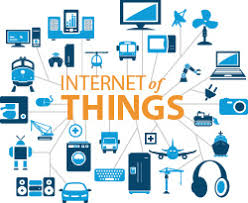
How to Win IoT Field: Japanese companies are struggling
In 2016, the news was spread all over Japan that Sharp was taken over by Taiwan EMS company, Hon Hai. Sharp had been leading Japanese economy, but those days their performance was below expectation because Chinese or Korean companies were expanding market shares in global market. [1] Toshiba, also famous for electronics, has considerable financial problems due to their failure in nuclear and semiconductor memory business. [2] Electronic industry including these two companies has been leading Japanese economy, but now their failures are even affecting the whole Japan.
In this industry, a new wave is coming, IoT. IoT (Internet of Things) implies that almost all items surrounding us can be connected to each other via Internet. And electric appliances have huge potential for IoT. For example, as Nick Colsey, our guest speaker, said in the lecture, smart TV is one of IoT products. Smart TV can be connected to an air conditioner or even a popcorn machine When you watch a film, automatically air temperature will be set comfortably, and popcorn will be cooked. [3] IoT can be applied to every appliances in our daily life, and IoT market is still growing. So, there are huge chances for electric companies which are familiar with those items.
Japanese companies of course try to approach IoT market. But, they have difficulties in coming up with innovative ideas for IoT because current technology progress is so rapid that they cannot catch up with. Then they came to one conclusion, “Open Innovation”. Open innovation has been a buzzword in Japan for a decade. Incumbents have been making many efforts. Especially, one method, instead of investing in internal R&D, became popular these days, which is to invest in startups. They try to collaborate with startups with advanced technology to achieve innovation. For example, Panasonic established in 2017 Panasonic Ventures. Panasonic Ventures is a corporate venture capital (CVC), but they try to solve a problem which most Japanese CVCs face. Normally, Japanese descent CVCs have to wait for their parent’s companies to decide whether they invest or not, so it takes longer than individual venture capital (IVC) for decision, which startup companies hate. However, Panasonic Ventures is more like IVC so that they can invest in more various fields more quickly. Since they invested first in June 2017, they’d started investing in four startups only for six months, which was more frequent than usual. Panasonic Ventures seeks for new business, which cannot have been discovered without CVC. [4]
In addition to Panasonic, other Japanese electric companies make use of CVC to reach out to the new frontiers. However, it’s already been a decade since they started to seek open innovation. But now we don’t see any stunning outcome so far. We desperately need one successful story to prove that CVC and investments in startups are efficient. Used-to- be big companies are still struggling.
[Sources]
[1] https://www.japantimes.co.jp/news/2017/08/13/business/corporate-business/year-hon-hai-takeover-sharp-back-black-staff-come-grips-meritocracy/#.W16MbtX7Spr
[2] http://biz-journal.jp/2018/07/post_23935.html
[3] Nick Colsey, the guest speaker at MS&E 238 on 27/7/2018
[4] https://news.mynavi.jp/article/20180331-pana/
One comment on “How to Win IoT Field: Japanese companies are struggling”
Comments are closed.


Hey Atsuki,
I really appreciate your well researched article,
The hard truth of life is progress is slow, Japan has always been a huge sector to provide the next upcoming generation devices. Progress has been slow and upcoming with the new invention of the invisible tv and other new ideas and devices being a proof of the progress.
I would debate upon the restrictive forces that are slowing down the process of progress, namely politics and other such factors.
What are your takes on this point?
Best,
Dev Saraf